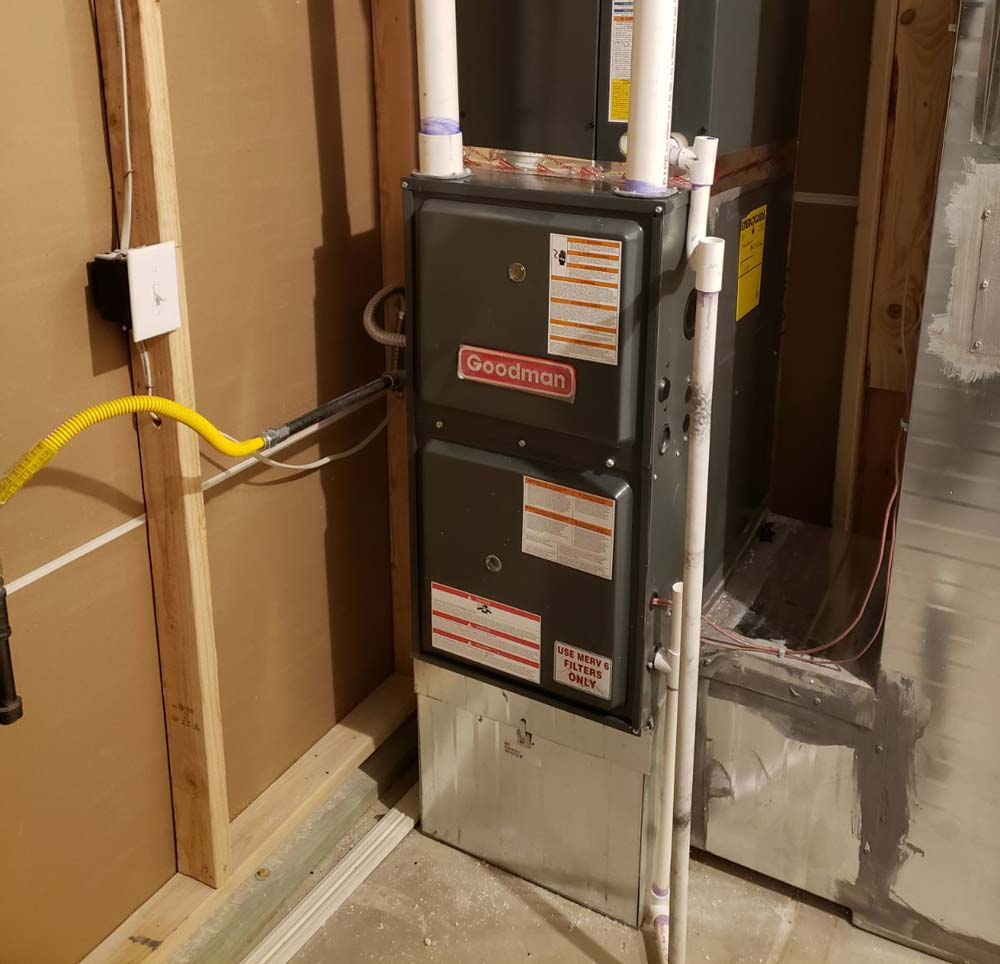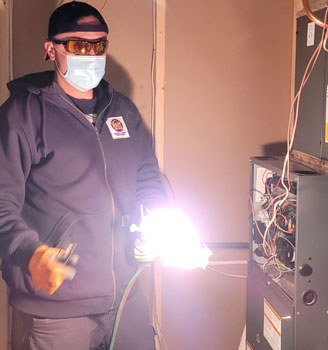
In 2023, about 55% of U.S. households are heated with natural gas; another 12% of homeowners use blue fuel as an option. Gas heating systems are especially popular in Texas and California, which have favorable gas rates; Colorado is also among the regions with high demand for gas heating. As a leading HVAC contractor in Denver, BHC&Air is adept at finding energy-efficient heating solutions for properties of all sizes and levels of complexity: let us warm your home without excessive fuel consumption or astronomical bills!
Signs You Need a New Heating System
It is convenient to arrange the installation of gas heating with a major renovation; as a rule, the need to replace the equipment arises in the second decade of operation. Installation of the system using previously laid communications reduces costs, but in any case, the replacement of heating remains an expensive deal. You should be prepared for the installation of new heating equipment in advance; start saving for the renovation as soon as the first signs of trouble appear, warning of imminent system failure:
- unexplained increases in gas and electricity bills;
- frequent minor repairs;
- low or uneven indoor temperatures;
- spontaneous shutdown of the furnace and fan;
- regular activation of the emergency protection system;
- thermostat malfunctions;
- stuffy, dry air, odors of smoke or burning;
- complaints of headaches;
- constantly running fan;
- extraneous sounds – tapping, creaking, grinding, etc.

Understanding Your Gas Heating Installation Options
Most houses have centralized heating systems – heat is distributed through radiators, air ducts or under-floor piping. The heat generator is usually a furnace, less often a steam boiler; the gas heating installation is selected on the basis of thermal calculation and building design.
In furnace heating systems, the heat generated by the combustion of gas is redistributed by means of a fan between rooms through adjustable ventilation grilles. Despite design limitations due to the impossibility of zone control by a single central thermostat, furnace heating has many practical advantages:
- relatively low cost;
- combining heating and air conditioning;
- reliability and ease of maintenance;
- wide model range;
- possibility to increase energy efficiency.
In hydronic heating systems with a steam boiler, water circulating in a closed circuit acts as the heat generator. The surfaces to be heated are descaled because of the high-water pressure; unlike fans, the circulation pumps that set the speed of water movement in the heating circuit are silent.
Hydronic boilers are superior to furnaces in energy efficiency, distribute heat more evenly, and allow for zone control of heating. Nevertheless, hydronic systems have not become widespread due to the high volume of investments and the need to build a boiler room.
In mild-winter regions, it is possible to install a gas heat pump, an innovative heating system that does not require piping. The system is arranged like a split air conditioner: an external compressor unit blows street air into the internal unit, which performs the functions of air treatment and heating; in summer, mini splits work in air conditioning mode. When winter temperatures drop to -4…-7F, the capacity of heat pumps is not enough for full-fledged heating of dwellings, so an additional heat generator is required.
High-Efficiency Natural Gas Heating Systems
Innovative, resource-efficient furnaces and boilers with 90-98.5% AFUE ratings will be a worthy answer to the surge in gas prices in 2021-22. In addition, thanks for reduced fuel consumption, installing an energy efficient gas furnace or condensing boiler reduces emissions and takes care of the well-being of the environment.
Most new generation convection furnaces are available with two heat exchangers: 80% of the unit’s output is provided by the product coil, while the recuperation device adds another 10-20% by utilizing flue gas energy. The recirculation gas duct provides the possibility of recuperation, i.e. utilization of flue gas energy, which mixes with high-temperature combustion products and performs convective heat transfer to the product heat exchanger.
Recuperation technology is also widely used in the design of condensing gas boilers that utilize the energy of combustion products. The flue gas paths absorb heat and transfer energy to the heat transfer medium; the decrease in flue gas temperature leads to condensate formation.
Equipping furnaces with variable speed motors and multi-stage valves with intelligent weather control expands heat supply settings and reduces wasteful fuel consumption. Some furnace models can work in conjunction with air conditioning systems to dehumidify humid air during the summer season.

Custom Gas Heating Installation Recommendations
For objects with complex layouts and high aesthetic requirements it may be necessary to develop duct gas heating according to a special project. Air heating integrated into the ventilation system successfully solves a number of non-standard engineering and design problems:
- concealed wiring;
- organization of zone heating;
- fast heating of the room without drying out the air;
- comfortable indoor climate.
In order to reduce the cost of installation and maintenance of air heating systems, it is recommended to thoroughly insulate the building, paying special attention to windows, floors and roof slabs. Also, high-tech heating equipment needs professional adjustment and service, which is performed twice – before the heating season starts and after it closes.
Factors That Affect The Cost of Gas Heating Installation
The cost of gas heating installation is influenced by various factors, not all of which are related to the structural parameters of the building. The project budget is affected by the operating conditions of the equipment, the state of the communications and the personal wishes of the customer. The main pricing factors include:
- type of burner (single-stage, two-level, modulated) – the wider the modulation possibilities, the more expensive the furnace;
- dimensions and power of the equipment;
- brand, i.e. products of expert companies with history are quoted higher;
- building characteristics, i.e. total meterage, number of storeys, number of rooms, design, ceiling height, quality of thermal insulation and ceilings, presence of attic or basement;
- additional works, i.e. dismantling and utilization of old equipment, repair and reconstruction of communications, adjustment of program control, commissioning, project approval by authorities, etc.
DIY Gas Heating Installation vs. Hiring Professional
Gas equipment is a high-risk source that requires strict adherence to installation techniques and enhanced fire protection measures. For this reason, only licensed contractors are allowed to perform installation work; even if a home handyman exceptionally turns out to be a self-taught genius and does everything correctly, unprofessional installation of a heating system makes it difficult to sell the house and can result in a large fine.
However, in most cases, non-specialists who are not familiar with the specifics of installing modern heating systems make serious mistakes that increase the risk of fire and carbon monoxide poisoning. Self-installation of heating system is dangerous first of all for you and your family, so it is easier and cheaper to contact experts and correctly install the system the first time than to eliminate the mistakes.
Benefits of Professional Heating Installations
Professional heating system installation is a prerequisite for the safe operation of heating equipment in residential and commercial settings. In order to obtain a NATE license for HVAC work, contractors must meet the requirements for personnel qualification and preparation of material and technical base for quality services. As a result, delegating heating installation to professionals eliminates unnecessary worries, frees up time, and provides valuable organizational benefits:
- guaranteed quality of installation;
- coordination of the project in supervisory authorities;
- preparation and cleaning of the workplace;
- low noise level;
- careful attitude to the client’s property;
- removal of construction waste for disposal;
- installation at your convenience;
- optimal terms and prices.
How Much Would Gas Heating Installation Cost?
No BHC&Air project is repeated twice, so the cost of heating system installation is calculated individually for each client. The amount includes the cost of purchasing gas equipment and consumables, payment for the services of the installation team and the cost of operating special equipment, so the amount ranges from 2500 to 10 000 USD with an average value of about 4500 USD.
The cost of upgrading your heating system and installing equipment from scratch is usually lower with local contractors because of convenient logistics and established relationships. If you want to save money, look for local contractors closer to home, so BHC&Air will gladly accept your order and help you optimize the estimate without loss of productivity.
As an experienced player in the HVAC industry, we’ve thoroughly researched the market and can source specialty equipment at a discounted rate through the Xcel Energy Partner Program. As a result, you’ll get a flawless turnkey heating system that will pay for itself immediately and work smoothly for the benefit of your home for at least 10-15 years. In case of any questions on calculation and installation of gas heating you can consult on the site or by phone at any time 24 hours a day, 7 days a week!




